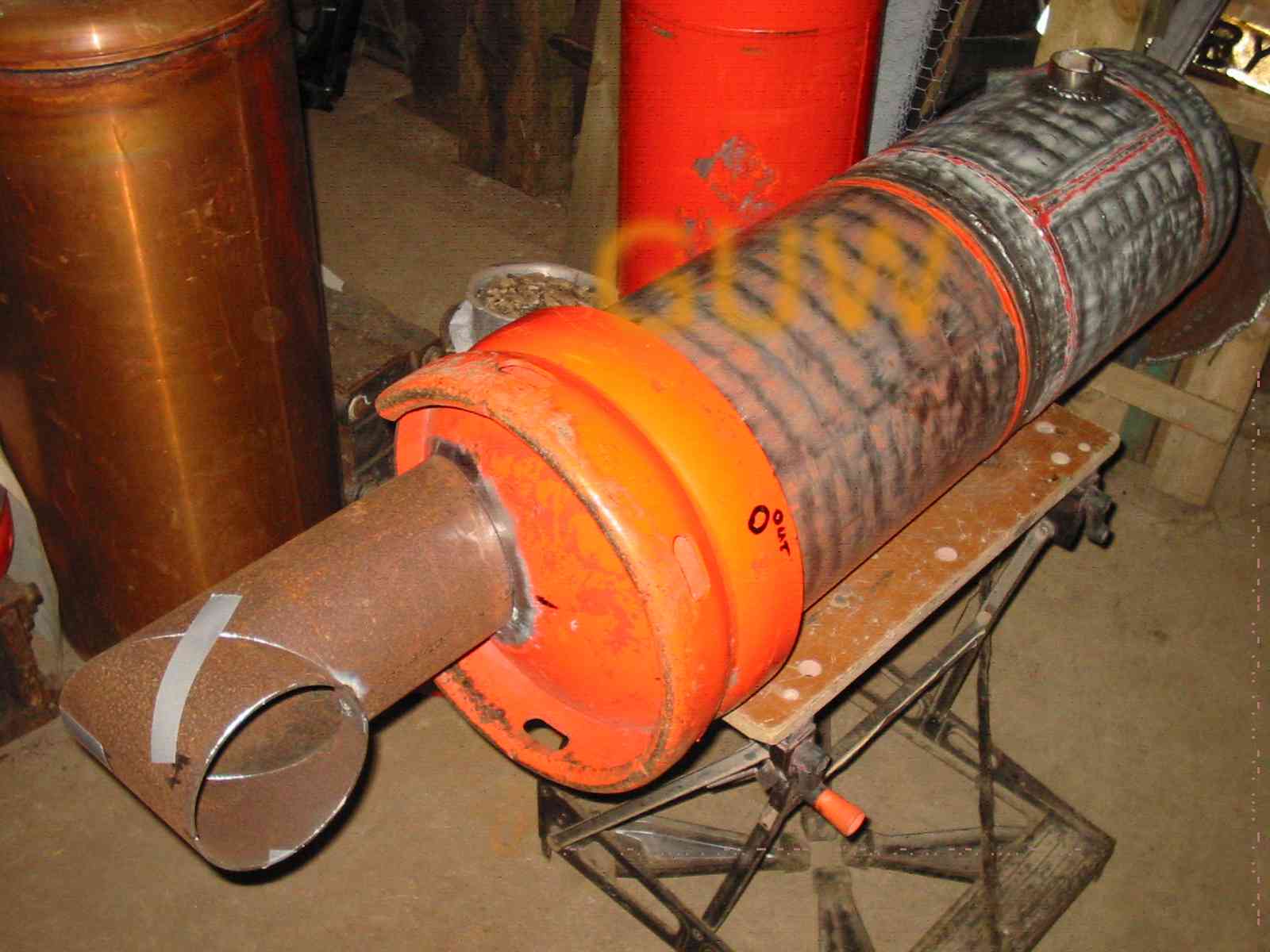©2014 FIRECRACKER™GUW ALL RIGHTS RESERVED

Welding the main boiler
(Click to enlarge photo)
Gas cylinders are extremely dangerous but also, they must not be used if they belong to a gas company. Please see the section Safety and disclaimer. All the gas cylinders I use are either new or have been scrapped and put beyond use due to physical damage. Never cut open a gas cylinder unless you know exactly what you are doing and you have satisfied all of the safety and legal requirements.
From the photo you can see how I constructed the main boiler on my new complete system. Inside there are two smaller (12") gas cylinders joined end-to-end. Obviously it is essential that water can flow everywhere between the inner and outer jacket so there must be at least and inch (25mm) and preferably more between the two. I arranged mine so that the domed top of the inner cylinder met the domed top of the outer cylinder near where the burner would enter. At the other end there is a 6 inch (150mm) steel tube welded at the base of the inner cylinder that exits through the outer. All of the internal welding was finished and pressure-tested before the outer cylinder was welded back together as an inside leak once the outside was finished would be a nightmare! There is also a short piece (I think I used 2 1/4 inch [56mm]) of steel pipe welded to the side of the inner cylinder that you can just see at the top of the photo at the far end. This will be where the light sensor will be attached to watch the flame. It was a bit fiddly juggling all of these items into the right place for welding but it can be done. Perhaps I would find another way to arrange the light sensor if I was starting the job again, possibly through the end where the burner goes in or maybe the other end where it is cooler. Putting a pipe through the side as well as through the ends is much more hassle than putting all of them through the ends.
The large pipe at the end is obviously where the exhaust gases escape and, although it seems counter-intuitive to attach it at the bottom, this is so only the coldest gases (hot gas rises) leave the boiler and we get the maximum heat out as quickly as possible. There is also another small tube that goes through the outer cylinder and into the water-jacket just above the burner, this is where the bulb of the cut-out thermostat will eventually sit. Because this thermostat is a physical device it is one of the most vital safety features to prevent the boiler from over-heating (boiling) if something went wrong. Personally I prefer to have more safety devices than strictly necessary, particularly on an experimental set-up.
You can see from the photo that I have taped the two pieces of large pipe that will form the 90 degree bend together. I work on my own mostly and holding metal in the right place so it can be tacked together is always a challenge. Tape, magnets and heavy weights are vital aids to get things just right. I prefer to use a stick-welder as there is little to go wrong when it isn't used for a while. I do love MIG (metal insulated gas) welders but, similar to oxyacetylene, I do object to paying a rental on a gas cylinder even when it is not in use! I don't know why it irritates me but it does!
©2014 FIRECRACKER™GUW ALL RIGHTS RESERVED
